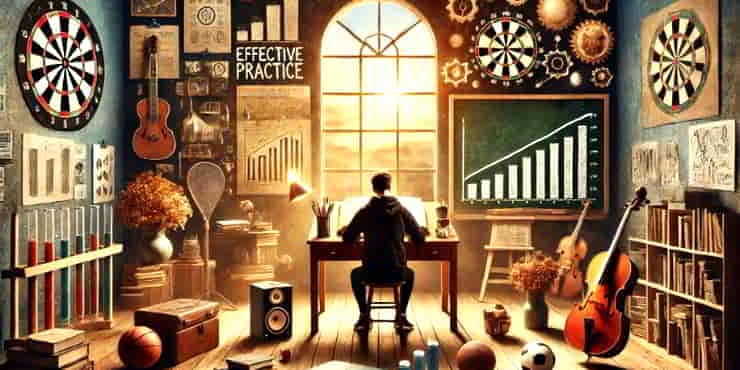Bounce Back From Burnout: Practical Tools For Achieving Balance In Life

Estimated reading time: 11 Min
This article is for those feeling lost in the turbulence of life, providing guidance on how to bounce back from burnout on the way to balance and harmony.
Imagine reaching the end of a long day feeling not just exhausted but utterly drained, as if all your energy and enthusiasm have been syphoned away, leaving behind a shell of your former self.
This isn’t the tiredness that a good night’s sleep can cure; it’s deeper, more treacherous, and it doesn’t just go away with rest.
Heavy workloads and continuous stress can lead to burnout, a state characterised by great exhaustion on all levels—physical, mental, and emotional.
In a world that never switches off, where demands on our time and energy seem to be constantly ramping up, burnout has become a silent epidemic, creeping into our lives and eroding our well-being.
Through understanding the nature of burnout and implementing strategies for a more balanced lifestyle, you can find your footing in a chaotic world and rediscover the joy in everyday living.
Understanding Burnout
Burnout is like a candle burning at both ends; eventually, there’s nothing left but a wisp of smoke.
Exhaustion, cynicism, and feelings of reduced accomplishment are typical symptoms of burnout.
- Exhaustion goes beyond physical tiredness to encompass deep mental and emotional fatigue.
- Cynicism manifests as a detached and negative view of one’s job and colleagues.
- A sense of reduced accomplishment leaves individuals feeling that nothing they do makes a difference or is appreciated.
The roots of burnout often lie in work-related stress, yet lifestyle factors and even certain personality traits, like perfectionism, can also contribute to the feelings.
Imagine a juggler trying to keep more balls in the air than they can handle; eventually, some will fall.
This metaphor illustrates how trying to manage more tasks than we are capable of can lead to stress and, ultimately, burnout.
The Consequences of Ignoring Burnout
Turning a blind eye to burnout is like ignoring the warning lights on your car’s dashboard; eventually, something is going to break down.
The impact of burnout stretches beyond just making you feel tired all the time.
It can lead to serious health issues, including anxiety, depression, and heart disease.
A study published in the “Journal of Applied Psychology” highlighted how employees suffering from burnout report lower job performance, showing that the effects aren’t confined to our personal lives but spill over into our professional roles as well.
Moreover, burnout can strain relationships, leading to withdrawal from social activities and causing rifts with friends and family.
It’s as if the stress creates a fog around us, distorting our view of the world and disconnecting us from the people we care about most.
Recognising and addressing burnout is not just about improving our work lives; it’s about safeguarding our health and maintaining the quality of our relationships.
Strategies for Moving From Burnout to Balance
You can find support for addressing burnout, but what you choose to do is what will make a difference.
Making changes can seem hard, which is sometimes where support can help you make good decisions and help implement changes.
Self-Assessment
The first step towards healing is recognising that you’re burning out.
It’s similar to checking your car’s fuel gauge before a long journey; you need to know your starting point.
Ask yourself how you’re feeling mentally and physically.
Are you constantly tired?
Do you feel detached from your work or your loved ones?
Acknowledging these feelings is the first step towards recovery.
Setting Boundaries
In today’s always-on culture, it’s essential to set boundaries between work and personal life.
Think of it as setting up a garden fence to protect your personal space.
This could mean turning off work emails after a certain hour, learning to say no to additional responsibilities when you’re already stretched thin, or ensuring you have time each day that is just for you, free from the demands of others.
Mindfulness and Self-Care
Incorporating mindfulness and self-care into your routine is like recharging your batteries; it’s powerful for your well-being.
Mindfulness techniques, such as meditation or deep-breathing exercises, can help centre your thoughts and reduce stress.
Self-care can be as simple as taking a walk, reading a book, or enjoying a hobby.
It’s about finding activities that replenish your energy and bring you joy.
Asking for Help
Seeking support is like asking for directions when you’re lost; it’s a smart way to find your way back.
Talk to a therapist, a coach, or trusted friends and family about what you’re going through.
Sometimes, just the act of talking about your experiences can lighten the load and provide new perspectives.
Implementing a Balanced Lifestyle
Learning to prioritise tasks and manage your time effectively is like navigating a ship through stormy seas towards calm waters.
Identify what’s most important and what can wait.
Use tools like lists or digital apps to organise your tasks and commitments, and always remember to schedule time for rest and relaxation.
Healthy Habits
Maintaining a healthy lifestyle is essential in preventing burnout.
Regular physical activity, a nutritious diet, and adequate sleep are the pillars of physical and mental health.
Most people use lack of time as an excuse for not looking after themselves.
Think of it as regular maintenance for your vehicle; without it, performance drops and breakdowns become inevitable.
Hobbies and Interests
Engaging in hobbies and interests outside of work adds colour to your life, much like adding vibrant hues to a monochrome painting.
Whether it’s playing an instrument, gardening, or practicing a sport, hobbies provide a necessary distraction and a sense of achievement and can be a great way to meet like-minded people.
I remember a time when my work was particularly stressful.
I would start an hour early and leave an hour early in order to then use a couple of hours windsurfing—a memorable way to clear the cobwebs!
It helped me through having to focus 100% on something different, get daily exercise and, in the process, improved my windsurfing skills.
Real-Life Stories of Achieving Balance
Hearing about others who have successfully navigated from burnout to balance can be incredibly inspiring.
Senior Marketing Executive
Sarah (name changed) went from burnout to balance while working in a bustling marketing agency where deadlines were tight and the workload never seemed to decrease.
As a senior marketing executive, she found herself constantly tethered to her phone, checking emails during family dinners, and working late into the night to stay ahead.
The lines between work and personal life blurred until she couldn’t remember the last time she had a day off that didn’t involve thinking about work.
The turning point came during a family holiday, during which she spent more time in her hotel room working than exploring with her family.
Realising she had missed out on precious moments, Sarah knew something had to change.
She was exhausted, disillusioned with her job, and felt a deep sense of dissatisfaction despite her career success.
Upon returning, Sarah initiated a candid conversation with her boss.
She highlighted her achievements but also expressed how the unsustainable workload was impacting her health and happiness.
Together, they devised a plan that allowed for more flexible working hours and the delegation of certain responsibilities to other team members.
This was the first step towards reclaiming her time and well-being.
Sarah also revisited an old passion: painting.
As a child and young adult, she loved art but had set it aside for her career.
Now, she dedicates weekend mornings to painting, finding peace in the strokes of her brush and the colours on her canvas.
Painting became a therapeutic escape, helping her to disconnect from the pressures of work and reconnect with herself.
To address the physical toll of her burnout, Sarah joined a local yoga class.
Yoga not only improved her physical flexibility and strength but also introduced her to mindfulness and meditation.
These practices helped her develop a greater awareness of her stress triggers and taught her how to manage her reactions to them.
Importantly, Sarah learned to prioritise self-care and set boundaries.
She made a rule not to check work emails after 7 PM or on weekends, reclaiming her evenings and weekends for relaxation and quality time with loved ones.
She also made it a point to take her full lunch break, often spending it outside to get some fresh air and sunshine.
Through these changes, Sarah transformed her life.
She became more productive and creative at work because she was happier and more balanced.
Her relationships improved, and she rediscovered joy in both her personal and professional lives.
Sarah’s story is a testament to the fact that finding balance isn’t about diminishing one’s career ambitions but about creating space for growth, health, and happiness.
Software Developer
Alex (name changed) is a software developer who experienced severe burnout due to the relentless pace of his work and constant deadlines.
Alex found himself in a cycle of long hours and high stress, sacrificing sleep and personal time to keep up with his workload.
He began to feel detached from his passions and hobbies, which had once been a source of joy and relaxation for him.
Realising he was on the brink of burnout, Alex took a step back to assess his situation and decided to make significant changes in his life.
First, Alex spoke to his manager about his workload and expressed his need for a more balanced schedule.
They agreed on a plan that allowed Alex to work on projects that were personally interesting to him alongside his regular duties and implemented more flexible deadlines where possible.
This change alone lifted a weight off Alex’s shoulders, as he felt more in control of his work.
Recognising the importance of physical health in combating burnout, Alex reintroduced exercise into his routine.
He started with short walks during his breaks and gradually included morning jogs and weekend hikes.
The physical activity not only improved his fitness but also provided a mental break from work and a chance to connect with nature, which he found incredibly rejuvenating.
Alex also rediscovered his love for coding through personal projects unrelated to work.
These projects allowed him to explore new technologies and creative ideas without the pressure of deadlines, reigniting his passion for software development.
This hobby provided a sense of accomplishment and satisfaction that was different from his professional achievements, contributing significantly to his recovery from burnout.
Through these steps, Alex managed to find a healthier balance between his work and personal life.
He learned the importance of setting boundaries, taking time for self-care, and reconnecting with his passions.
Alex’s story illustrates that even in demanding careers, it’s possible to find balance and rediscover joy in both work and life outside of it.
FAQs
What are the first signs of burnout?
The first signs include chronic fatigue, irritability, lack of motivation, and a feeling of detachment from your work or personal life.
How can I talk to my employer about burnout?
Approach the conversation with honesty, focusing on how your feelings are affecting your work. Propose possible solutions that could help, such as adjusting your workload or schedule.
Can a hobby really help me find balance?
Absolutely. Hobbies offer a mental break from stress, stimulate creativity, and provide a sense of achievement that work might not.
Is it possible to achieve balance without changing jobs?
Yes, by setting boundaries, practicing self-care, and improving time management, many people find balance without needing to change their employment.
How do I maintain this balance in the long term?
Consistency is key. Regular self-assessment, adhering to your boundaries, and continuing to engage in activities that replenish your energy will help maintain balance.
Summary: Bounce Back From Burnout
The journey from burnout to balance is universally relevant yet deeply personal.
It’s a reminder that our well-being is not just a personal responsibility but a collective opportunity.
By sharing our stories, supporting each other, and advocating for positive change, we can all contribute to a world where balance is not just an ideal but a reality.
However, nothing will change without action.
So, take that first step today, either for yourself or to help someone else.
Embrace the strategies that take your fancy, find out what works, and share your journey.
Help show others the way.
Let’s turn the tide from burnout to balance, one story, one step at a time.
Finding balance in a chaotic world is like trying to navigate through dense fog to emerge into the clear sunlight.
It requires patience, effort, and, occasionally, a change in direction.
But with the right strategies and support, moving from burnout to balance is not just a possibility; it’s a journey worth taking.
Remember, the goal isn’t to make life less busy or challenging; it’s to make it more manageable, fulfilling, and joyful.
Start today, and step by step, you’ll find your way from the shadows of burnout to the light of balance and harmony.
But why stop there?
Once you’ve found your footing, why not extend a hand to those still fighting their own demons?
Share your story, whether it’s a quick post on social media, a heartfelt conversation with a friend, or a more substantial commitment like mentoring someone in your professional network.
Your journey could illuminate paths for others, just as the stories of Sarah and Alex might have shed some light for you.
Consider joining or forming support groups—virtual or in-person—where people can share experiences, strategies, and encouragement about overcoming burnout and finding balance.
Engaging with a community offers not just a platform for you to give back but also continues your growth, exposes you to new perspectives, and strengthens your own balance.
If you’re in a position to do so, advocate for policies and practices in your workplace that promote work-life balance for everyone.
This could range from flexible working hours to wellness programmes.
Change often starts with a single voice; let yours be heard.
Finally, commit to being a lifelong learner.
Our world, our lives, and our selves are always evolving.
What works today might need adjustments tomorrow.
Stay open to new ideas, strategies, and solutions to maintain balance in the face of new challenges.
Please let me know how you’re doing.
😉
Richard
Resources
- Mindful.org is a comprehensive resource for mindfulness and meditation techniques.
- The Sleep Foundation: Tips and advice on improving sleep for better health.
- “Burnout: The Secret to Unlocking the Stress Cycle” by Emily Nagoski and Amelia Nagoski: A book offering insight into understanding and managing burnout.
- Your local mental health services and support groups can offer personalised advice and support tailored to your situation.






